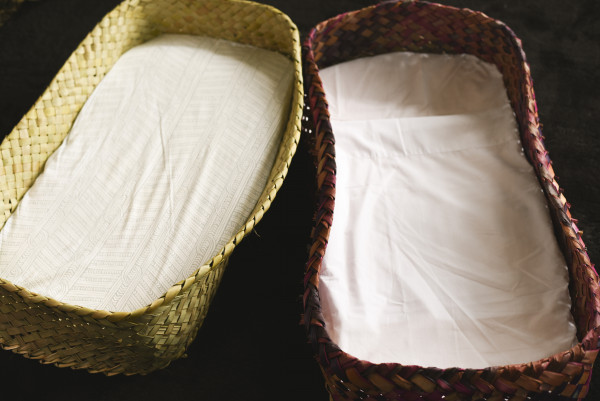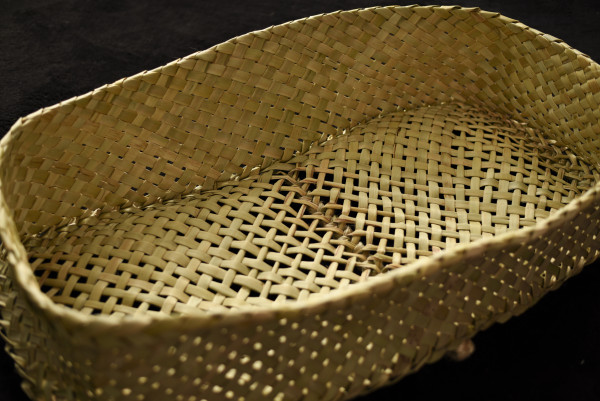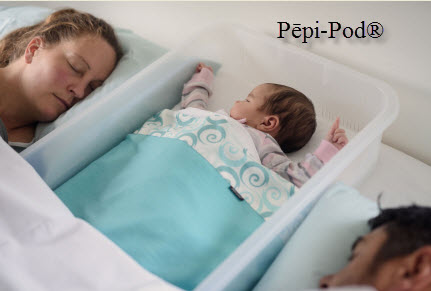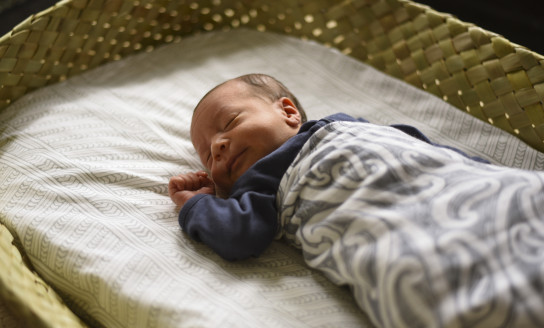Sharing a bed with your baby
If you choose to share your bed with your baby, keep them safe by putting them beside you in their own baby bed (a wahakura, Pēpi-pod®, or similar safe sleep device). Until they’re 12 months old, babies are vulnerable to SUDI (Sudden Unexpected Death of an Infant) during sleep, and using a baby bed like this will help reduce the risk of your baby suffocating while they’re asleep.
The four key steps to making sure your baby has a safe sleep spell PEPE:
- Place baby in their own baby bed in the same room as their parent or caregiver for at least the first six months. Put your baby to sleep in their own safe sleep space – a bassinet or cot, or a wahakura or Pēpi Pod® if you choose to have your baby in bed with you. Don't put them directly in the bed with an adult or another child who could accidentally roll over and smother them. It’s also important to make sure your baby has a sober parent/caregiver who is alert to their needs and free from alcohol or drugs.
- Eliminate smoking in pregnancy, and protect baby with a smokefree whānau (family), whare (home) and waka (car). There’s a strong link between SUDI and smoking. Healthy babies have an inbuilt ‘wake up’ response that protects their breathing. This response in babies is seriously weakened by smoking, especially in pregnancy. Make sure you keep your baby’s environment – before and after birth – smoke-free.
- Position baby flat on their back to sleep, with their face clear of bedding or anything else. They should sleep with their feet to the end of their bed, on a firm flat mattress. When pēpi sleeps on their back, their airway is clear and open and this helps them breathe easier.
- Encourage and support breastfeeding and the gentle handling of baby. Mothers can sustain tikanga ūkaipō (traditional practice of breastfeeding) with positive breastfeeding experiences.
Read more and watch videos about SUDI prevention
Using a wahakura
A wahakura is a sleep device for pēpi woven from harakeke (flax) and fitted with a mattress. This provides pēpi their own safe sleep space while bed-sharing, letting mother and pēpi be close, something whānau value highly.
It helps to protect pēpi against accidental suffocation caused by a parent or caregiver rolling onto their baby, or the baby being smothered by blankets.

The process of making a wahakura connects whānau to traditional Māori matauranga (knowledge) and tikanga. There are various types of wahakura - waikawa and whiri. Wahakura raranga (plaiting) and whiri (braiding) weaving techniques ensure it stays strong, the base stays flat, and so that the sides won’t collapse.

Guidelines for wahakura change according to the region where they’re made.
You’ll need a 20-25mm foam mattress with a cotton cover, and you need to make sure there are no gaps between the inner wall of the wahakura and the mattress. The National SUDI Prevention Programme's national safe sleep device guidelines (PDF) provides a summary of guidelines for weaving a wahakura.
Using a Pēpi-Pod®
The Pēpi Pod® is made from polypropylene, a food-grade plastic that can be fitted with a mattress and bedding. Like the wahakura, they’re designed so you can share a bed with your baby, while keeping baby safe from accidental suffocation.

Pēpi-Pod®
Where to get wahakura, Pēpi-Pod® and similar safe sleep devices
Weaving a wahakura is not an easy task and requires a lot of practice. Your local DHB’s safe sleep coordinator may be able to put whānau in touch with reputable weavers who work to safety specifications.
You can buy Pēpi Pod® and similar safe sleep devices on Trademe.
If you’re planning to share your bed with your baby and don’t have a safe sleep device for your pēpi ask your midwife, doctor, or Plunket nurse or Tamariki Ora nurse for help to get one.
Many infant health care (Tamariki Ora) providers will have wahakura/pepi-pods that you can borrow/hire for six months.
If you’re on a low income, you might be able to get help from Work and Income to buy a baby bed. Click the link below and look under 'help with costs for the baby.'
